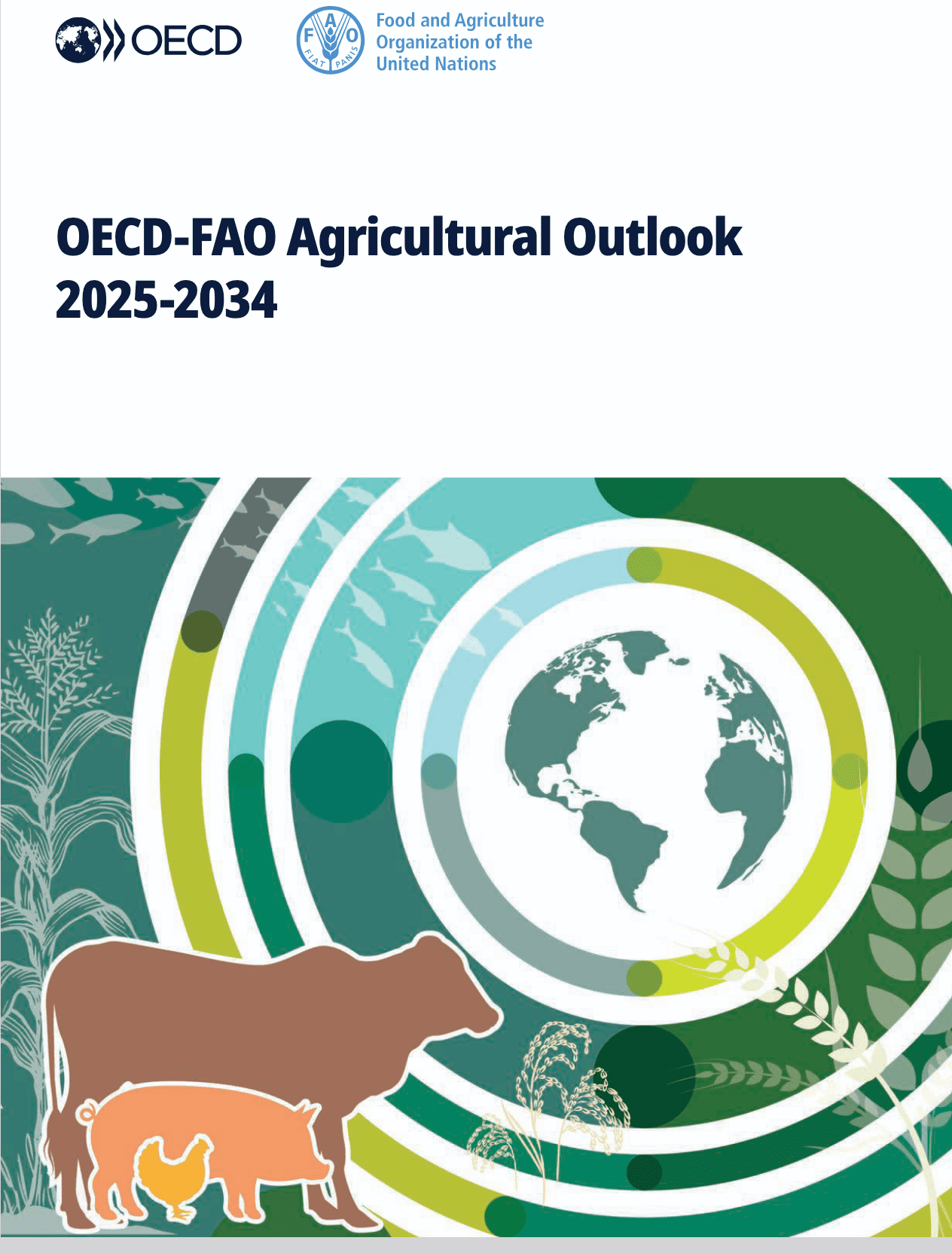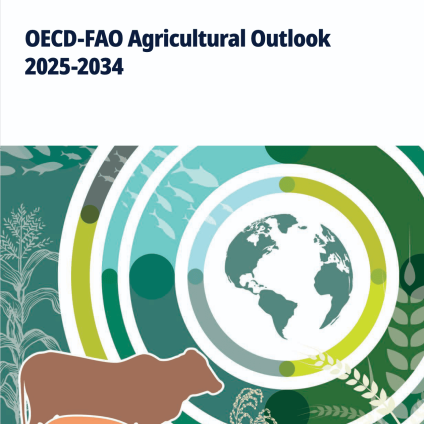Agricultural production is expected to rise by 14% in the next decade, driven by middle-income countries. But emissions, inequality, and farmer resilience remain key challenges.

OECD-FAO report, global agriculture outlook 2025–2034
The 21st edition of the OECD-FAO Agricultural Outlook 2025–2034 offers a vital benchmark for medium-term projections in agricultural and fisheries markets at national, regional, and global levels.
Agricultural output to rise, emissions remain under scrutiny
According to the data, global per capita calorie intake from livestock and fisheries products is expected to grow by 6% over the next decade.
The main driver will be the rapid expansion seen in lower-middle-income countries, where growth could reach 24%, nearly four times the global average.
This increase is tied to rising incomes, particularly in middle-income nations, which will fuel higher demand and production of animal-based foods.
Yet, to reduce undernourishment worldwide, more food production must come from improvements in agricultural productivity, not just expanded output. At the same time, greenhouse gas (GHG) emissions from farming must be limited.
How nutrient intake is projected to change
The OECD-FAO report estimates that average daily intake of nutrient-rich foods will reach 364 kcal per person. However, this figure will mask sharp inequalities both within and between countries.
For example, in low-income nations, average daily per capita intake of animal-based foods is expected to reach just 143 kcal, well below the 300 kcal benchmark used by the FAO to assess the cost and accessibility of a healthy diet.
Overall, global production of agricultural and fish commodities is forecast to rise by about 14% by 2034, largely due to productivity gains in middle-income countries.
Livestock production, meat, dairy, and eggs, is set to increase by 17%, while global inventories of cattle, sheep, pigs, and poultry will grow by 7%.
As a result, direct GHG emissions from agriculture will climb by 6% over the next decade.
Emissions intensity to fall despite growth
The link between agricultural growth and emissions will continue to evolve depending on how widely efficient production methods and new land-use practices are adopted.
With expected productivity improvements, the carbon intensity of agriculture is forecast to decline across all regions in the next ten years.
Higher productivity is also expected to lower real prices for agricultural commodities, which may affect smallholder farmers who are vulnerable to market volatility and often lack access to advanced technology.
That’s why, the OECD-FAO report emphasizes, productivity gains alone are not enough. Governments must ensure that farmers have access to markets, support programs, and training.
By 2034, 40% of all cereal production will be used for human consumption, while 33% will go to animal feed. The remaining share will serve biofuel production and other industrial purposes.
Health awareness rising in high-income countries
In wealthier nations, changes in diet are expected as well. Per capita consumption of fats and sweeteners is likely to decline due to evolving preferences, policy changes, and growing health concerns.
A 7% reduction in GHG emissions, alongside a 15% boost in productivity, could be achieved by adopting currently available technologies such as precision agriculture, improved livestock feed, optimized nutrient and water management, and low-cost, scalable practices like crop rotation, intercropping, and compost-based nutrient systems.
The pace of technology deployment, infrastructure development, and knowledge transfer will determine how these projected outcomes translate into real-world results.












